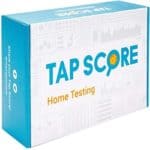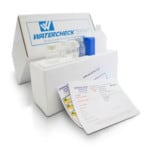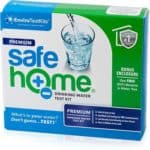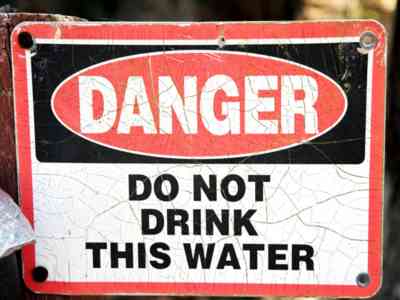
The most harmful substances in your water are the ones you can’t see. Whether your water comes from a city source or a private well, hidden dangers could be lurking in every glass.
Not every filter tackles all contaminants. Before investing in a filtration system that might not fully address your water issues, it’s smart to first figure out what’s in your water with one of these top-rated testing kits.
Expert Picks
Choosing the right kit the first time around can save you time, money, and frustration. To help, we’ve rounded up the top 7 kits for both city and well water. Whether you need lab-tested results or a quick DIY option –these kits have you covered.
- Best Overall: SimpleLab Tap Score
- Runner-up: National Testing Laboratories
- Best Budget: Health Metric Drinking Water Test Kit
- Best For Well Water: Quality Water Treatment Well Water Test Kit
- Runner-up For Well Water: Safe Home ULTIMATE Water Quality Test Kit
- Best For LEAD & Bacteria: Pentair Rapid 16-Point Water Test
- Best Test Strips: Watersafe Drinking Water Test Kit
#1 SimpleLab Tap Score – Best Overall
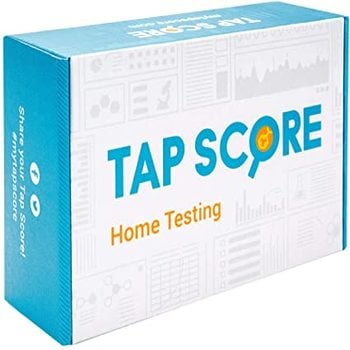
SimpleLab is an award-winning California company on a mission to improve your drinking water. You select the type of test you need, and they send you a kit with clear instructions. Once you return the sample, you’ll receive a detailed report that’s easy to understand.
Our testing was for city water — see our test results.
Highlights
- Choose single or multi-contaminant panels
- Free two-way shipping
- 5-day turnaround
- Crystal-clear instructions
- Unbiased product recommendations
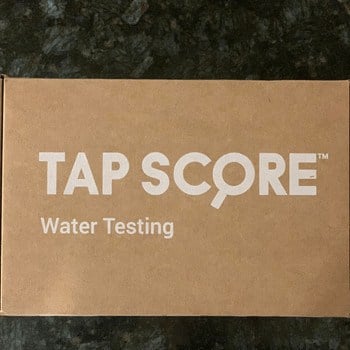
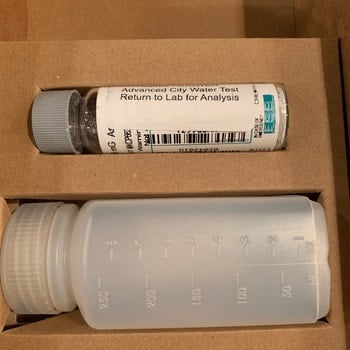
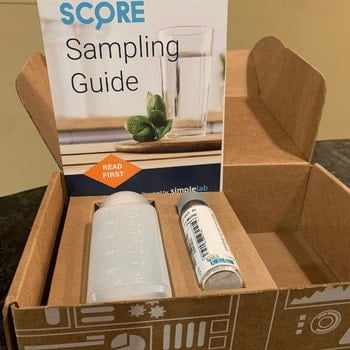
What we like best
Return the sample to SimpleLab, and in a few days, you’ll get a Tap Score — an overview of how your water measures up from harmful contaminants to benign but corrosive substances that could affect your plumbing.
Using publicly available data plus information from tests performed within 5 to 10 miles of your home, you’ll learn how your water quality compares to others in your area. Reports include recommendations for filtration products that could improve your score.
Pros
- Reliable Results: The tests provide consistent, accurate results, for both city or well water.
- User-Friendly: The process is straightforward, with clear, interactive guides to help you understand your results.
- Comprehensive Testing: Covers a broad range of contaminants, so you can be confident you’re getting a complete picture.
- Fast Turnaround: Get your results quickly, typically within five business days.
- Thorough Reports: Detailed and downloadable – these reports make it easy to understand your water quality.
- Certified Labs: The labs are certified, ensuring that the results are trustworthy.
- Excellent Support: Customer service is responsive and helpful, ready to assist with any questions.
- Cost: The prices are reasonable, so you can get the tests you need without breaking the bank.
Cons
- No Automatic Alerts: You won’t receive automatic notifications when your results are ready, so you’ll need to check manually.
FAQs
Q: Does SimpleLab use only EPA-certified laboratories?
A: Most are, but the structure for certification is complicated, and EPA certification isn’t always the best criteria by which to judge certain labs — some have alternative credentials that exceed EPA criteria. If you’re a business with a certification requirement, contact the TapScore team, and they’ll route your sample to an appropriate lab.
Q: Can I order individual tests?
A: Choose from more than 30 single tests and a dozen specialty panels. Order them alone or add them on to any of SimpleLab’s city or well water panels.
Q: Does SimpleLab sell filtration products?
A: No. The company doesn’t sell filtration equipment and has no financial ties to filter manufacturers. They make only unbiased recommendations vetted with information from the National Sanitation Foundation (NFS) and the Water Quality Association (WQA).
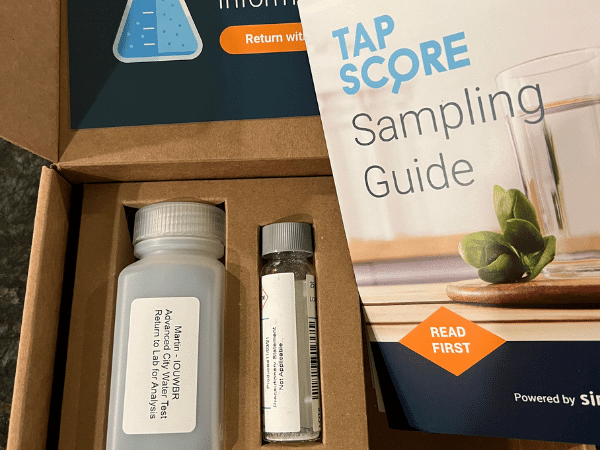
Our Take
TapScore is almost too good to be true. Pioneers in laboratory technology, SimpleLab has testing down to an art. Sampling is a breeze, and results don’t require a PhD in chemistry to understand. If you’ve never done a water test before, the process is foolproof.
Your TapScore offers real solutions, outlining steps you can take immediately to improve your water quality. More than a test, it’s a full service complete with professional advice at a surprisingly competitive price. With SimpleLab, it’s like you have a friend in the business.
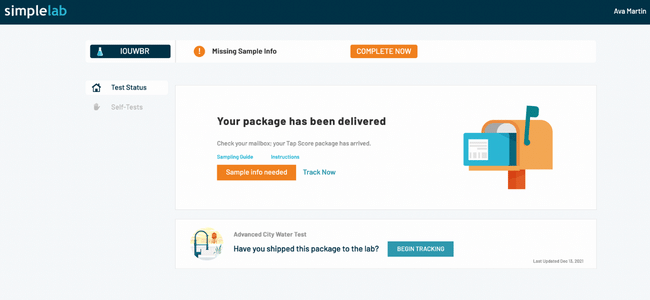
Read our full review: Tapscore Review
#2 National Testing Laboratories
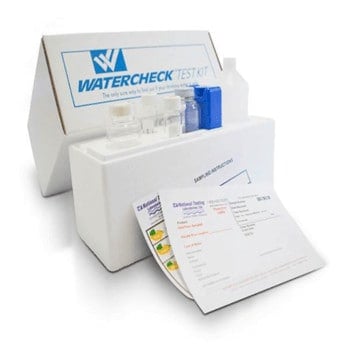
National Testing Laboratories is an industry leader offering a full range of tests for city and well water.
Trusted by real estate agents for their 2-3 day turnaround time on panels specifically designed for home sales, testing takes as little as a week from start to finish, including shipping time.
Highlights
- Quick turnaround
- Dozens of test choices
- Simple instructions with video support
- Extensive industry certifications
- Competitive pricing
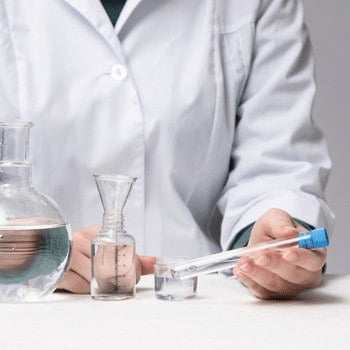
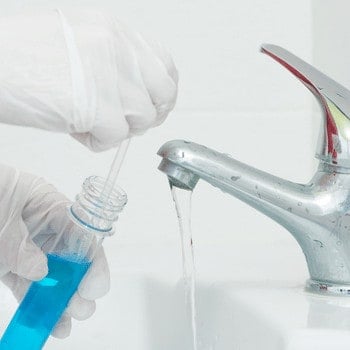
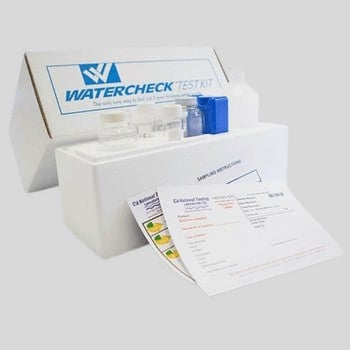
What we like best
Sampling instructions are clear — there’s a support video on the website if you’re a first-timer. All tests are performed to the highest standard by their EPA-certified lab and reported in a clear, understandable way.
Pros
- Dependable Accuracy: This is a go-to for accurate results, whether you’re dealing with city water or a private well. No guesswork here.
- User-Friendly Setup: The process is straightforward, with clear instructions and a handy video to guide you if needed—no chemistry degree required.
- Thorough Analysis: With over 200 contaminants covered, this kit leaves no stone unturned. It’s like having a mini lab at your disposal.
- Smart Tool Support: Their “symptom check” tool is a game-changer, helping you choose the right test kit based on your specific water worries.
- Worth Every Penny: For the depth of testing you get, it’s a solid investment. You’re not just paying for a kit; you’re paying for peace of mind.
Cons
- Shipping Costs on You: Customer pays for overnight return shipping and return shipping isn’t included in the price.
FAQs
Q: How are results received?
A: You’ll get a full report by mail or via e-mail by request.
Q: Why do I have to send it overnight?
A: Some substances in water deteriorate as they await testing. Overnight shipping is recommended, so you get the most accurate results possible. Customers are responsible for return shipping fees, but the lab will send a discounted prepaid label at your request.
Q: Can I return the kit?
A: Kits may be returned unused, but customers are responsible for return shipping and a $30 restocking fee.
What we like
National Testing Laboratories is laser-focused on accuracy. Multi-state-, EPA-, NELAC- and ISO-certified, they’re trusted by industry professional from well drillers to water bottlers. At the consumer level, the service is exceptional but a little less user-friendly.
From paying for return shipping to reports with labspeak, someone who’s never done a water test before will have to work a little harder to get the bottom of their water quality issues. Yet their customer care team is supportive, and results are medical lab-quality. You can’t go wrong with National Testing Laboratories.
#3 Quality Water Treatment Well Water Test Kit
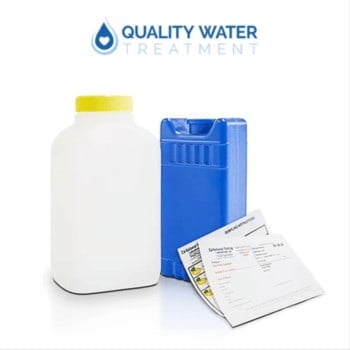
Quality Water Treatment offers three water analysis kits designed specifically for wells.
From a “Lite” panel that covers the basics to the “Standard” option with 85 different parameters from heavy metals to organic chemicals, it’s affordable, comprehensive testing focused on groundwater contaminants.
Highlights
- Budget-friendly options
- EPA-certified lab
- No-risk guarantee

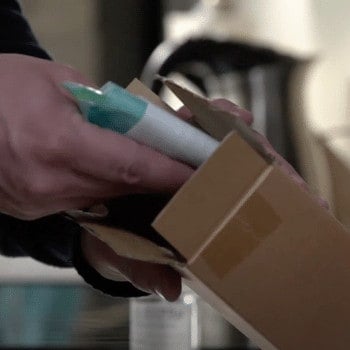

Pros
- Quick Results: Results arrive via email in just a few days, with the option to consult a water quality specialist for further guidance.
- Money-Back Guarantee: They stand behind their kits with a satisfaction guarantee, ensuring you get what you need.
- Three Testing Levels: Choose from Lite, Basic, or the comprehensive Standard kit, depending on your needs.
- Affordable Lite Option: The Lite kit is budget-friendly, covering 22 heavy metals, 5 physical factors, and 7 inorganic chemicals.
- Basic Package Plus Bacteria Testing: The Basic kit adds crucial bacteria, coliform, and E. coli checks.
- Comprehensive Standard Kit: The Standard test goes further, testing for lead, arsenic, uranium, fluoride, nitrates, VOCs, TDS, and disinfection byproducts.
- User-Friendly Design: All kits are easy to use and come with clear instructions.
Cons
- Return Shipping Cost: Customers are responsible for covering the return shipping costs, which adds to the overall expense.
- Longer Turnaround Time: Results may take a bit longer compared to other kits, ranging from a few days to a few weeks.
FAQs
Q: Are the kits easy to use?
A: Just fill the bottles as instructed, repack them in the container they came in with the cold pack and mail it back. It’s that simple.
Q: Will I be pressured into buying a water filter?
A: Quality Water Treatments has cost-effective solutions to well water problems and may make recommendations, but there’s no obligation to buy.
Q: Are results difficult to interpret?
A: Results show the contaminant levels in your well and the EPA-recommended limits for comparison. You’ll know at a glance which are within normal limits or high.
What we like
Quality Water Treatment understands well water problems. Their panels are comprehensive without going overboard on testing for low-risk contaminants — why pay for more than what you need? Results come from an independent, EPA-certified laboratory for about 30-percent less than the competition, and help is available for choosing a water filtration product with no hard sell. When every dollar counts, it’s a quality, cost-effective solution.
#4 Pentair Rapid 16-Point Water Test
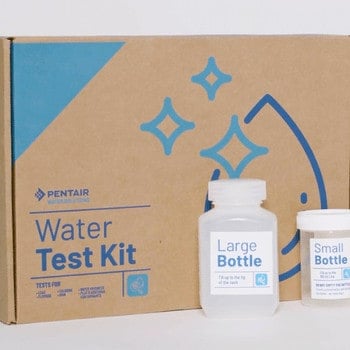
Pentair’s 16-point test kit screens for the most hazardous contaminants from bacteria to heavy metals.
It checks for pH, tannins, sulfate and iron — important parameters when choosing water filtration gear.
Highlights
- 7-10 day turnaround
- EPA-certified lab
- Results by e-mail
- Free test with equipment purchase
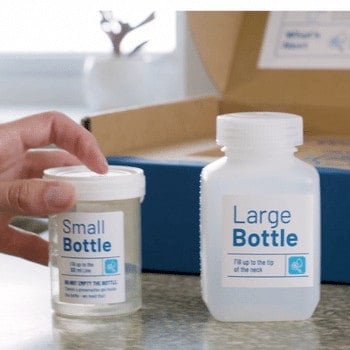
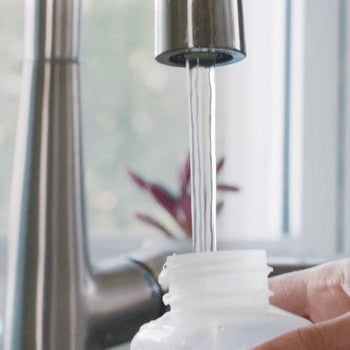

What we like best
Sampling is effortless, and tests are performed by an independent certified lab. The price of the kit covers shipping both ways. And if you purchase a whole house water filter from Pentair, they’ll credit you for the cost of the test, making it on the house.
Pros
- Expert Guidance: Pentair Pelican offers support to help interpret your results and recommend the best solution for your needs.
- Comprehensive Testing: Screens for 16 of the most common and harmful water contaminants.
- User-Friendly: Clear, concise instructions make the process straightforward, even for first-timers.
- Fast Turnaround: Get your results in less than a week, giving you peace of mind without the wait.
- Cost-Effective: A budget-friendly option that doesn’t skimp on quality.
Cons
- Limited Customization: No options for add-on tests, so you’re limited to the predefined set of contaminants.
FAQs
Q: Is this the best test for city water?
A: This test is better for wells. It checks for lead, but doesn’t test for chlorine or other contaminants of concern in municipal water.
Q: Does the turnaround time include shipping?
A: The clock start when your sample is received. Depending on transit time, expect results in 7-10 days.
Q: Why doesn’t Pelican offer more test options?
A: Pelican isn’t a lab. Their sole interest is to ensure you get the right filtration product, so it offers this simple test with the parameters necessary to make an informed choice as a convenience to its customers.
Our Take
Pentair’s 16-point water test isn’t the most extensive, but it’s a lot of bang for your buck. It screens for lead and bacteria — must do testing with kids in the house. Ideal for annual well screening, it also checks for the iron, pH and tannins that could ruin a water softener. Simple problems require simple solutions, and no one does that better than Pentair.
#5 Safe Home ULTIMATE Water Quality Test Kit

Safe Home’s ULTIMATE Water Quality Test Kit identifies 200 of the most toxic contaminants in city, well and even bottled water.
Features
- 200 parameters
- Foolproof sampling process
- EPA-certified lab
- Free two-way shipping
- Competitive pricing
What we like best
Made in the US and supported by a staff of knowledgeable water quality professionals with more than 150 years of combined experience, samples are expertly analyzed at their EPA-certified lab.
You’ll be notified when the sample is received and get a detailed report 7-10 days business days later, or your next kit is free. As a bonus, Safe Home donates a percentage of all profits to clean water initiatives around the world.
Pros
- Comprehensive Screening: Covers a wide range of contaminants, including heavy metals, bacteria, pesticides, and more.
- Reliable Results: Delivers quick and accurate findings, so you know what’s in your water without delay.
- User-Friendly: Designed for ease of use with straightforward instructions.
- Budget-Friendly: An affordable DIY kit that delivers fast and dependable results.
Cons
- Limited Scope: Does not test for PFOA or PFOS, so additional testing might be necessary if those are concerns.
FAQs
Q: Does this kit test for chlorine and chloramine?
A: No. Both evaporate too quickly in transit for this particular test. For disinfectants, we recommend National Testing laboratories, SimpleLab’s TapScore or at-home testing with Health Metric or Watersafe test strips.
Q: Can I test milk or juice?
A: This kit is for water only, but if you purchase unpasteurized milk or juice, occasional testing is prudent. Call Safe Home for guidance. They have products that can help.
Q: Will Safe Home help me find the right water filter?
A: Safe Home doesn’t recommend filtration products, but their Learning Center provides information about different contaminants, how they affect your health and home, and the types of filtration system that eliminate them.
Our Take
Safe Home has revolutionized the industry with its line of convenient, at-home water testing. One of many they offer, the ULTIMATE version is a deep dive into water quality.It’s not cheap, and it doesn’t include some parameters you’d expect, like chlorine. But it tests for more heavy metals and chemicals than any other brand for a competitive price.
Results are fast, informative and easy to read — Safe Home tweaked its reports in response to customer feedback, and the results are impressive. Do you have to spend so much to know what’s in your water? No, but every parameter unchecked is a question that remains. Consider it an investment.
#6 Health Metric Drinking Water Test Kit – Best Budget
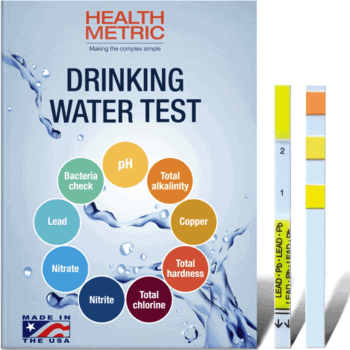
For a simple, accurate and low-cost way to check your tap water for lead, bacteria and more, look no further than Health Metric’s 9-in-1 water test strips.
Among the most sensitive on the market, the parameters match EPA guidelines.
Highlights
- Nine parameters, including lead
- Affordable
- Sensitive
- Individually wrapped for freshness
Pros
- Quick and reliable results — The Health Metric kit provides rapid insights into your water quality.
- Broad contaminant detection — It covers a range of issues, including lead, copper, pesticides, and bacteria.
- All-in-one package — Comes with clear instructions and a detailed quality report, making it easy to start.
- Easy to use — The straightforward guide ensures you get immediate results.
- Affordable option — A budget-friendly way to discover what’s in your water.
Cons
- Not as detailed as lab tests — Lacks the in-depth analysis that professional testing provides.
- No fluoride analysis — This kit doesn’t include testing for fluoride levels.
FAQs
Q: How long does it take to perform the test?
A: Set aside 30-45 minutes for the strips. The bacteria test takes a few minutes to do but requires 48 hours to develop.
Q: Does this test detect E.coli?
A: It checks for all coliform bacteria, including harmful strains of E.coli.
Q: Where are the test strips made?
A: The strips are manufactured in the US, not shipped from China and repackaged. The quality control is exceptional.
What we like
Test strips have limitations. But unlike bargain brands that can’t detect low levels of contaminants, these identify even the smallest quantities of lead, bacteria and more. Tests take time to complete, but at a quarter of the price of similar lab analyses, they’re an economical yet accurate option for cash-strapped homeowners who need a quality water test or a less expensive option for routine follow-ups. Buy with confidence.
#7 Watersafe Drinking Water Test Kit
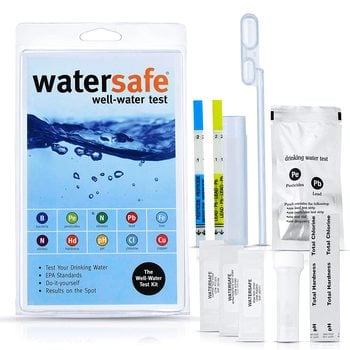
Watersafe has been making premium test strips for more than two decades.
Their 10-in-1 Kit identifies lead, bacteria, nitrates, pesticides, chlorine and more.
Features
- 10 parameters, including lead and bacteria
- Lab-validated sensitivity
- Individually wrapped for freshness
Pros
- Made in the US: Their rapid lead detection has been validated by an EPA-certified lab — a feature that’s hard to find.
- Affordable peace of mind: For families, especially with children, this kit provides quick testing for less than the cost of a fast-food meal.
- User-friendly: The kit is straightforward, with clear instructions.
- Comprehensive screening: Tests for a broad spectrum of contaminants, including bacteria, pesticides, and heavy metals.
- Quick results: Get your readings within minutes.
- All-in-one solution: The kit includes everything you need for thorough water analysis.
- Budget-friendly: It’s an economical choice for those keeping an eye on costs.
Cons
- Potential for errors: The testing process can be prone to mistakes.
- Temperature-sensitive: Kits must be shipped and stored under specific conditions to ensure accuracy.
FAQs
Q: Is this test suitable for wells?
A: This kit is ideal for both well and city water. It detects contaminants common to both plus chlorine.
Q: Does it check for fluoride?
A: It doesn’t. Test strip technology for fluoride is notoriously unreliable and offers little meaningful data. If you drink well water, natural deposits of fluoride are rare. For city water, your annual water quality report will show if there’s added fluoride.
Q: How much iron does this kit detect?
A: It measures levels up to 5 PPM, plenty to diagnose all but the toughest iron problems. Additional testing may be needed before buying a water softener.
What we like
Watersafe’s 10-in-1 test kit falls short of a lab test, but it offers more actionable results than a TDS reader. At a moment’s notice, you can check for lead and bacteria before making baby formula or any time you notice a change in your water quality. The testing process is more complex than with strips you dip into a glass of water. Some measuring is required, but the trade-off is accuracy. Watersafe test kits are an invaluable tool in anyone’s water quality toolbox.
Comparison Table
(Mobile users: Swipe to scroll) Compare Brands & Testing
Compare Brands & Testing
|
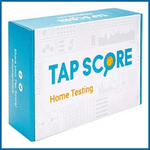 #1 Simple Lab Testing
#1 Simple Lab Testing |
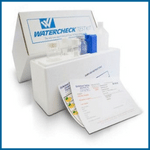 #2 National Testing Lab
#2 National Testing Lab |
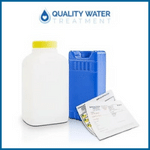 #3 Quality Water Treatment
#3 Quality Water Treatment |
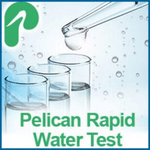 #4 Pelican Rapid Test
#4 Pelican Rapid Test |
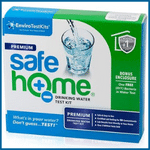 #5 Safe Home Ultimate
#5 Safe Home Ultimate |
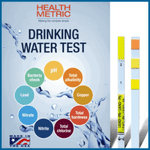 #6 Health Metric Testing
#6 Health Metric Testing |
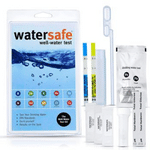 #7 Watersafe Testing Kit
#7 Watersafe Testing Kit |
|---|---|---|---|---|---|---|---|
| Rating | 5/5 | 4.5/5 | 4.5/5 | 4.5/5 | 4.5/5 | 4.5/5 | 5/5 |
| Price | $$$ | $$$ | $$$ | $$$ | $$$ | $$$ | $$$ |
| Type | Lab Testing | Lab Testing | Lab Testing | Lab Testing | Lab Testing | Test strips | Test strips |
| Analytes tested | 200+ | 75 | 85 | 16 | 200 | 9 | 10 |
| City/Well water | Both | Both | Well only | Both | Both | Tap water | Both |
| Turnaround time | 5 business days | 10-15 business | 15 business days | 7-10 business | 7-10 business days | 10 Minutes | 10 Minutes |
| Free shipping | ✔️ | ✔️ | ✔️ | ✔️ | ❌ | ❌ | ❌ |
Buyer’s guide
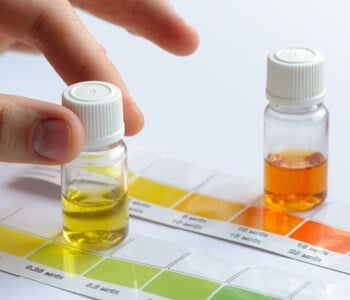
The latest news on American water quality isn’t pretty. From hard water to heavy metals, millions are coping with contaminants that wreak havoc on their health and homes.
Water filtration is the most cost-effective, environmentally friendly solution in home water analysis, but not all filters reduce all contaminants, so it’s critical to diagnosis the problem first.
Let’s take a closer look at the factors that shape your water quality and how to choose the best water quality testing kit.
Key Considerations:
- Ensure Accuracy: Compare top-rated home water analysis kits and choose one that delivers reliable and precise readings tailored to your specific needs.
- Costs: Don’t overspend on features you won’t use. Compare prices to find the best value without compromising.
- Ease of Use: Opt for a kit that’s straightforward to use and easy to interpret, so you can confidently understand your results.
- Quality: Investigate the types of tests included in different kits. Ensure it covers key parameters like pH, chlorine, and lead.
- Turn-around Time: No one likes waiting. Choose a provider known for fast, reliable results, whether delivered online or by mail.
Where Do Contaminants Come From?

Water can harbor thousands of dangerous contaminants, but chances are yours doesn’t. Typically, it’s a select group of substances that pose the greatest risk based on where your water comes from.
Drinking water comes from two sources — surface water such as lakes, rivers and streams — and groundwater — water stored in soil, rock and aquifers. In the US, about half of city water comes from each source. Nearly all private well water comes from underground.
With few exceptions, the make-up of groundwater is geologically stable. The substances that occur naturally in your area tend to remain the same long-term. If your last water quality test for arsenic was negative, chances are your next one will be, too — unless something changes above ground.
Your watershed — the area surrounding your home through which rainwater runoff flows — determines which contaminants are the most likely to reach your well. A heavy storm or melting snow, for example, can carry arsenic waste from an electronics factory down the road to your home, placing you at higher risk.
USGS maps show concentrations of hard water and geological contamination nationwide. Your local watershed map can help you identify potential sources of above-ground contamination near your well, such as:
- Landfills
- Factories
- Hazardous waste disposal sites
- Farms and feedlots
- Junkyards
- Sewage plants
- Mines
- Golf courses
- Car washes
- Hospitals
- Poorly maintained septic systems and more
City Versus Well Water — Assessing Your Contamination Risk
If you drink city water, most of the work is done for you. It’s checked for 90-plus EPA-regulated contaminants and disinfected at the source, so it’s biologically safe. Unless there’s a treatment error or a water main break, it won’t contain the bacteria, viruses or parasites that cause illness.
But it may have contaminants rarely found in well water, such as:
- Fluoride
- Disinfectants, such as chlorine and chloramine
- Disinfectant by-products, including bromate and trihalomethane — known carcinogens
Despite their best efforts, public water supplies nationwide are routinely testing above legal limits for trihalomethane.
Dangerous contamination can also occur downstream, after water leaves the treatment plant. Lead, for example, can leach from aging service lines and pre-1986 plumbing in your home.
If you drink well water, there’s no need to test it for disinfectants or fluoride — natural deposits are rare. But wells are vulnerable to geological and chemical contamination.
Risks vary significantly by area. Arsenic, for example, is rare in Florida groundwater but common in Southern California, Northern Maine and Nevada. Radon contamination is widespread in North Dakota but unusual in Louisiana.
Homeowners in agricultural areas should be concerned about nitrates, pesticides, herbicides and bacterial contamination from livestock feces, while a factory, landfill or hazardous waste disposal site in your watershed could mean a wide range of chemical toxins in your water.
City and well water also have similar characteristics — hard minerals, for example, plague both. Researchers, meanwhile, are just now beginning to understand the impact of chemical pollution and how it contaminates both public and private water supplies. So-called forever chemicals like per- and polyfluoroalkyl substances, or PFAS, are thought to impact at least 30 million homes.
Why Do a Water Test?

The only way to know what’s in your water is to test it — some of the most hazardous contaminants are colorless, odorless and tasteless. Your annual municipal water quality report offers valuable information — but only home test reveals exactly what’s coming from your tap today.
It took officials in Flint, Michigan more than a year to discover that a treatment plant error caused dangerous levels of lead to leach from old underground service lines. Undetectable at the source, it nonetheless poured from Flint-area taps, poisoning scores of children.
Testing your water at home also provides a breakdown of your water chemistry — essential information to have when choosing a water filter. Iron, for example, is a healthy mineral. But did you know that it can ruin some water softeners? Were you aware that chlorine damages reverse osmosis filters? Or that low pH makes iron filters less effective? Knowledge is power — don’t buy a filtration system without it.
Types of Testing Kits
Home testing kits come in five main categories, each targeting different types of contaminants:
- Microbiological Checks: Ensure your water is free from harmful bacteria and parasites.
- Hardness Measurement: Determine the levels of minerals like calcium and magnesium that contribute to hard water.
- Radiological Screening: Detects radioactive elements such as radon, uranium, and radium.
- Inorganic Chemical Detection: Identifies heavy metals like lead, mercury, chromium, and arsenic – which can be dangerous even in small amounts.
- Organic Chemical Analysis: Tracks down chemicals from pesticides, herbicides, nitrates, and industrial pollutants, including newer contaminants like PFOA and trace pharmaceuticals.
You can opt for kits focused on a single contaminant or choose comprehensive options that cover multiple categories.
Popular types include:
1. Test Strips
Test strips contain dry chemical reagents that change color when activated by water. Just dip a strip in a sample and compare the color changes to the chart on the back of the bottle. You can test for 1-20 contaminants with single strips that cost just pennies each, but you’ll have to purchase the whole bottle for $8-$60.
2. Color Disc Kits
Color disc test kits are available for a broad range of substances. Water is combined with liquid or powdered reagents in a reusable plastic tube. The tube is placed in a viewing box with a color disk — hold it up to light and rotate it until the color matches the sample, and the contaminant value is displayed.
Color disk kits are generally more accurate than strips but they cost significantly more, testing for only one or two substances at $40-$90.
3. TDS (Total Dissolved Solids) Meters
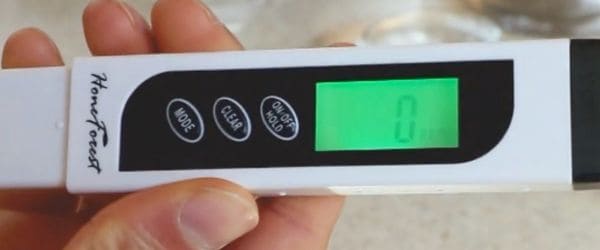
TDS meters are hand-held, battery-operated water quality testers that estimate the parts per million of total dissolved substances in water. They’re helpful tools but with limitations.
TDS meters work by measuring electrical conductivity, so they only detect charged particles. Worrisome contaminants from motor oil and gasoline to pesticides and PFOA have no electrical charge.
Toxic heavy metals are charged, but they’re measured in parts per billion, not million. TDS meters aren’t sensitive enough to detect lead at a hundred times higher than the legal limit.
They’re also non-selective. The majority of dissolved solids are minerals. But meters don’t differentiate between calcium and iron — must-know information when buying a water softener.
So why should you have a TDS meter? The EPA doesn’t set a limit on total dissolved solids, but they recommend further testing if levels are above 500 PPM. High TDS can indicate water quality issues that would benefit from filtration. Hard water, for example — high levels of calcium and magnesium — leave limescale deposits in plumbing that can lead to higher utility bills and costly appliance repairs. Other minerals, like iron, give water a bitter, metallic taste and can encourage the growth of select bacteria.
TDS meters are also ideal for monitoring the performance of water softeners or reverse osmosis filters. Low readings verify they’re working — high readings suggest they need maintenance.
TDS meters are no substitute for a water test, but for as little as $10, they’re a quick, affordable and reliable way to help monitor your water quality.
4. Mail-in Test Kits
Mail-in test kits have drastically improved consumers’ access to professional water lab testing. Purchase one online and collect a water sample in the container provided. Mail it back to the company — they partner with independent labs nationwide to give you the most accurate results. Select from kits that test for up to 200 contaminants. Prices start at $20. Expect results in about three weeks.
DIY Vs a Lab
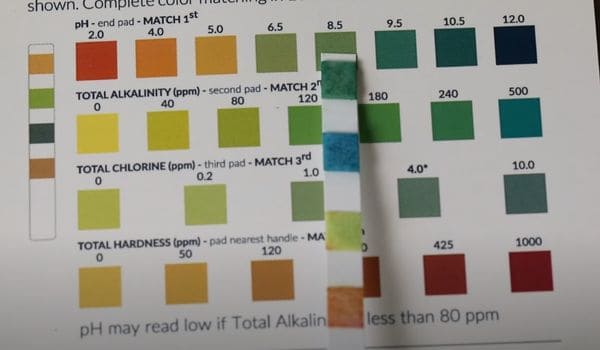
At-home testing kits are convenient, but they have drawbacks.
Test strips and color disk kits are accurate when used properly, but they’re less specific than lab tests. The chemical reagents are sensitive and deteriorate quickly once opened. Strips, for example, should be discarded after 90 days, so purchasing a bottle of 60 is no bargain for a one-time test. And accuracy is subject to human error. Lab technicians spend years training to get it right, so even with the utmost care, poor technique can skew the results.
Certified drinking water laboratories specialize in water science. Recommended by the EPA, they use only the latest in proven technology and undergo rigorous annual inspections. Instead of just a number, you get a full report that helps you interpret what contaminant values mean. When accuracy matters, they’re the sound choice.
Choosing The Right Testing Kit
These are the three most important factors to consider:
1. Your Water Source
Most city water is safe to drink, but it may expose you to:
- Hard minerals
- Chlorine
- Chloramine
- Trihalomethane
- Bromate
- PFOA
- Trace pharmaceuticals and more
But the most important contaminant to test for in municipal water is lead. A powerful neurotoxin, it causes severe, irreversible developmental disorders in children. There is no safe level.
If you own a well, the CDC recommends annual testing for:
- Bacteria
- Nitrates
- Total dissolved solids
- pH
— plus a test every five years for the geological contaminants that are common in your area, such as radon or arsenic. States have additional guidelines.
If you haven’t checked your well water in the last few years, we recommend a comprehensive analysis that also includes tests for hard minerals and the contaminants common in your watershed.
2. Test Accuracy
When you’re dealing with dangerous toxins measured in parts per billion, it’s crucial to get the science right. Test strips for lead are a quick and inexpensive way to check tap water weekly if you’ve had issues in your area or want to verify that your water filter is performing, but only a certified lab gives you the most accurate results.
Among tests performed at home, strips are less accurate than color disk kits but a fraction of the cost. If accuracy matters but the health impact of the contaminant is low, tests strips are a good option. But if imprecise results could cost you, splurge for the color disk kit. The difference between two and three parts per million of iron, for example, can drastically affect a water softener’s efficiency.
3. Cost
At-home testing kits cost as little as a few dollars for strips to $500 for comprehensive testing. As a general rule, purchasing a multi-contaminant panel brings the cost of each test down. You could drop hundreds on color disk kits for individual hard minerals, but you’ll spend less by buying a water hardness test kit and get more for your money.
Overspending on testing for low-risk contaminants doesn’t make sense. Yet we recommended being investment-minded. If you’re going to purchase a filtration system, the more you know about your water quality, the better buying decision you can make. Comprehensive testing isn’t cheap, but it’s more cost-effective than purchasing a water filter with bells and whistles you don’t need. And if you’re worried about your health, the peace of mind alone is worth the price.
Pros & Cons

This will ultimately come down to your preferences. However, in my expert opinion, you’re better off using a trusted water lab to test your water. If you’re just testing for basic things like chlorine, or sulfur, then a DIY test would be fine in my book.
Pros:
- Cost-effective – DIY test kits are much more affordable than lab tests, making them a budget-friendly choice.
- Convenient – You can check your water quality right at home without needing to send samples to a lab or wait for outside results.
- Quick Results – Most DIY kits offer fast and easy readings, providing results within minutes so you can take prompt action if needed.
- User-Friendly – These kits typically come with clear instructions and are designed for ease of use, making them accessible to everyone.
Cons:
- Limited Accuracy – Basic DIY tests might provide decent readings, but they can fall short for complex analyses. Without the precision of professional lab equipment, there’s a higher risk of inaccurate results or misleading positives and negatives.
- Restricted Test Range – Most at-home kits only cover essentials like pH and chlorine levels. They often miss out on more detailed assessments, like heavy metals and other contaminants that lab tests can detect.
- Time-Consuming – Some DIY kits require considerable time to complete and interpret, which might not be ideal if you’re in need of quick, reliable results.
- Contamination Risk – Without careful handling, at-home testing can be prone to contamination, leading to unreliable outcomes or skewed results.
FAQs

1. Where can I get my water tested for free?
Many states provide free testing services for well owners. Others offer lead water test kits for homes with school-aged children. Your local branch of the Cooperative Extension Service may provide complimentary or reduced-cost testing. Some of the top water filter companies offer free basic tests without obligation — but you may be pressured to buy.
2. How do I test water for lead?
A lead water testing kit is the simplest solution. Strips are fine for screening purposes, but because of the extreme danger lead poses, we recommend final testing be done by a certified drinking water laboratory.
3. How do I test tap water?
A specialized kit designed for city or well water will help you identify common contaminants. Choose one that aligns with your water source for the most accurate assessment.
4. How do I test well water?
Kits designed for wells focus on typical groundwater contaminants. Why pay to test for substances like chloramine that are found only in city water?
5. How do I test for chemicals in water?
An organic chemical testing kit identifies most hazardous chemicals, including select emerging contaminants like PFOA and trace pharmaceuticals.
7. Are home testing kits accurate?
While home kits aren’t as sensitive as lab analyses, they can be dependable if used correctly and stored properly.
8. How often should I test my water supply?
The EPA makes no recommendations for testing city water at home except to say that lead testing is an option if you have kids in the house.
Homeowners are solely responsible for testing their wells. It’s required whenever real estate changes hands, but the CDC suggests testing for bacteria, nitrates, total dissolved solids and pH annually and whenever part of your well is repaired or replaced. States recommend additional tests based on the contaminant risks in your area.
 104 people found this helpful. Was this guide helpful to you?
104 people found this helpful. Was this guide helpful to you? 
